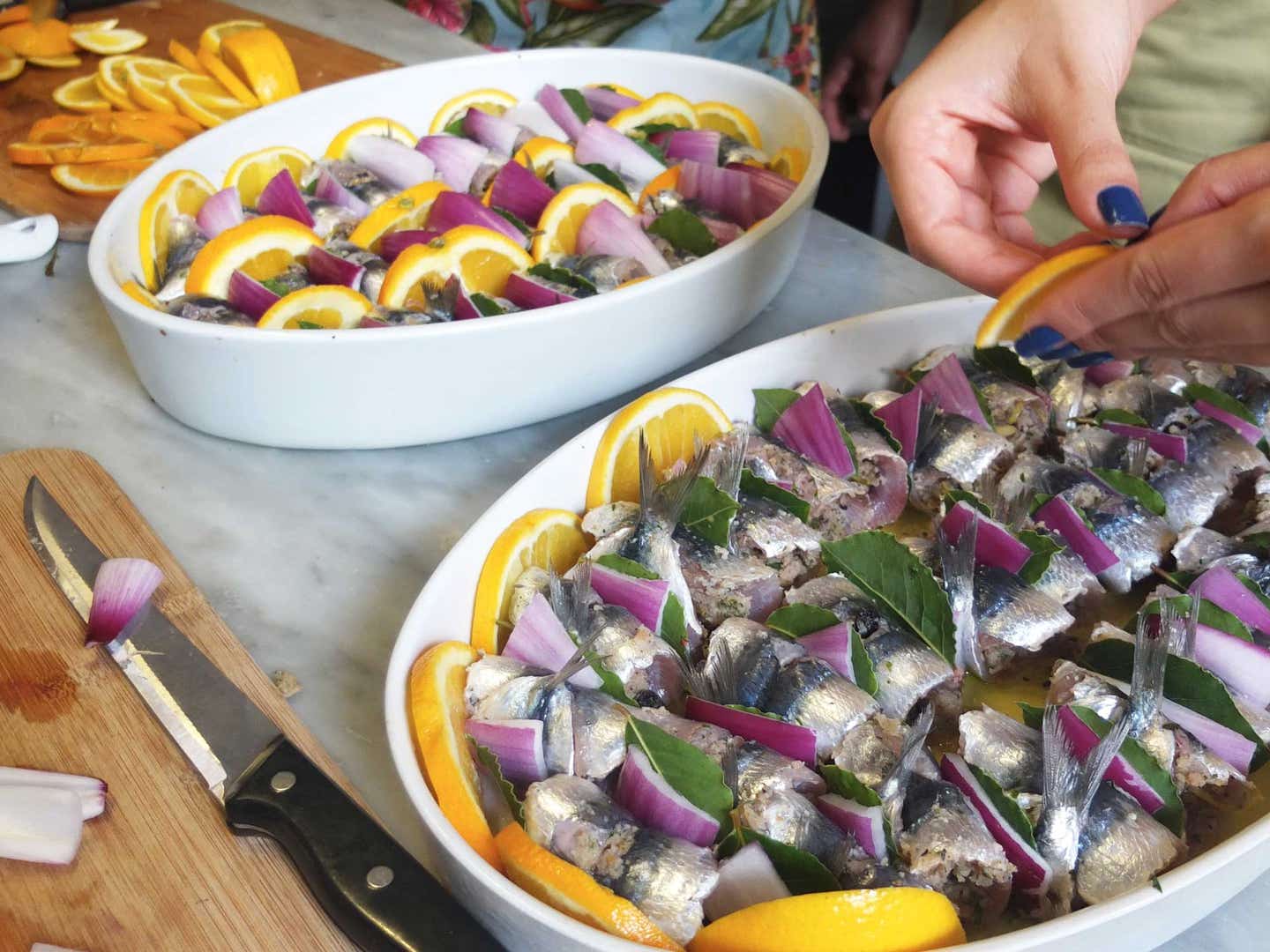
A Sicilian Duchess is Teaching a Cooking Class to Restore an 18th-Century Palazzo
The class uses Sicily’s cucina povera to preserve a piece of Palermo’s history and architecture
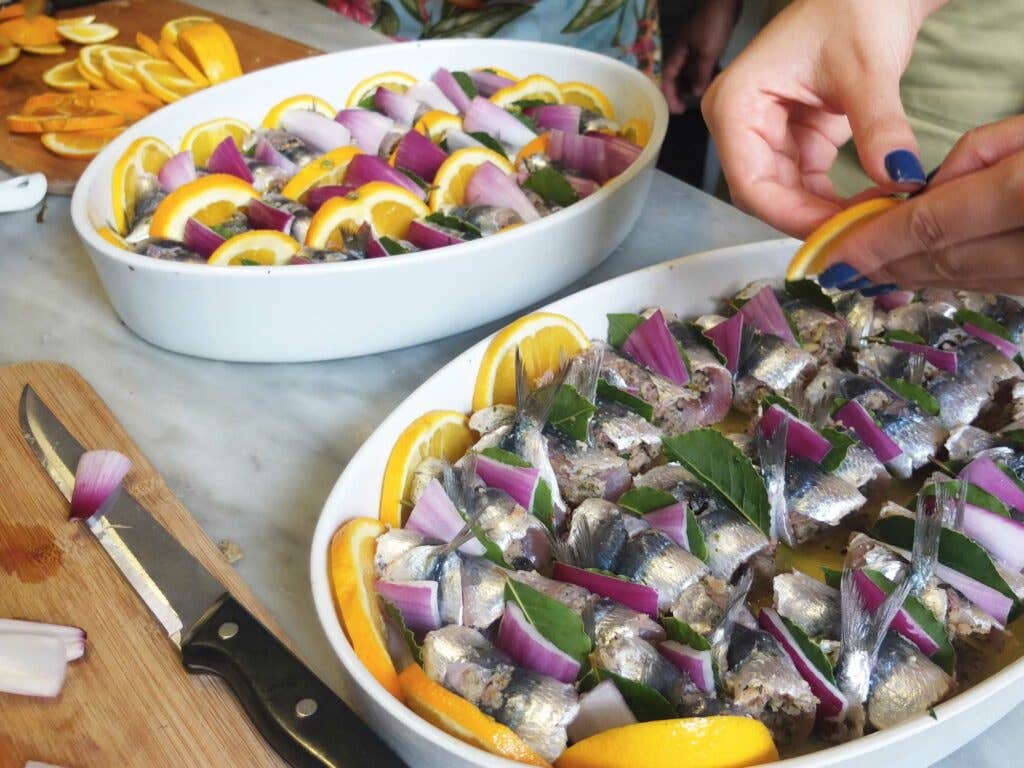
For much of the year, Palermo’s thousand-year-old Capo Market is violently loud. But today it is calm: most of the locals have fled to the coast, away from the stone city baking in the summer morning sun. The stalls, though, are still full.
“Sicilian cooking is all there in the local ingredients. Everything must be in season, that’s the main thing,” explains our spry guide, Nicoletta Lanza Tomasi, as she surveys a bounty of produce: borlotti beans still in their speckled pods, bulbous eggplants the size of grapefruits, and ribbed costoluto tomatoes.
Our quick path through the market is determined by local code, as she’s only “allowed” to frequent certain stands. In Palermo, you don't buy from your usual vendor—you “belong” to them.
Nicoletta is the Duchess of Palma di Montechiaro, a title she never mentions to us. Though she now serves as a de facto ambassador of Palermitan cuisine, the Duchess hasn’t always belonged to the area. Before settling in Sicily a decade or so ago, she and her Palermitan husband Gioacchino, a musicologist and former opera manager, lived around the world, calling New York, Naples, and Rome home. An impressive enough resumé, but these multi-hyphenates are also the guardians of a unique piece of Palermitan history: their home, an 18th century palazzo and the last residence of Gioacchino’s adoptive father, the great Sicilian writer Giuseppe Tomasi di Lampedusa.
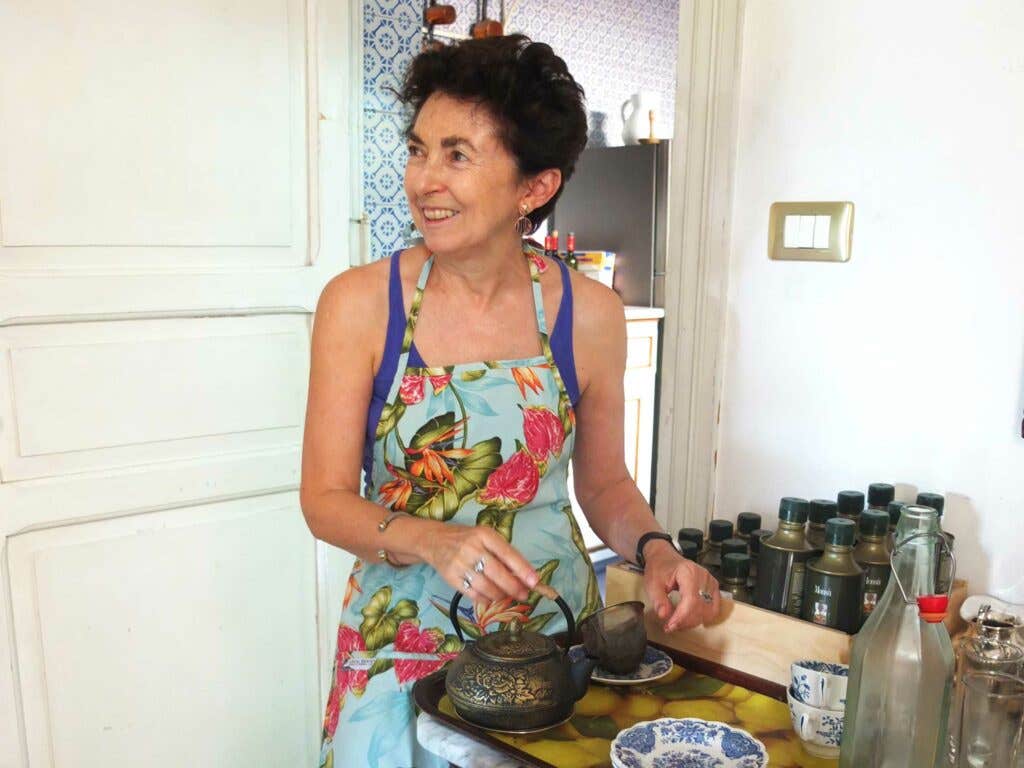
Her voice still catches when she recounts the great tragedy of Lampedusa’s life, starting with the loss of his ancestral home during the Allied bombing of 1943. “When they came back to Palermo after the war, they returned to a destroyed city,” she explains. “The loss of his palazzo was a terrible blow from which he never recovered. For him, it was the loss of his identity.”
In response, Lampedusa composed his masterpiece, The Leopard, a weighty meditation on change framed by the onset of the Italian unification in the 19th century. Its protagonist, Giulio Fabrizio, is based on Lampedusa own great-grandfather, who lived in the palazzo that became the writer's adopted home—today revived by Nicoletta and Gioacchino. But not long after receiving the manuscript's second rejection, he died just short of his 60th birthday and a year before its publication. The novel has since become the best-selling book in Italian history.
Despite this biography, the couple receives no support from the state to aid the necessary maintenance of their listed property, which was in complete disrepair when it was passed down to Gioacchino. While they fight for recognition alongside other historic Sicilian houses, it is up to them fund the entire upkeep, or as Nicoletta puts it, "feed an army" of glaziers, carpenters, art restoration experts, silversmiths and bronze specialists. Currently, they do so by renting out short-stay apartments on the top floor—and, crucially, through Nicoletta's cooking classes.
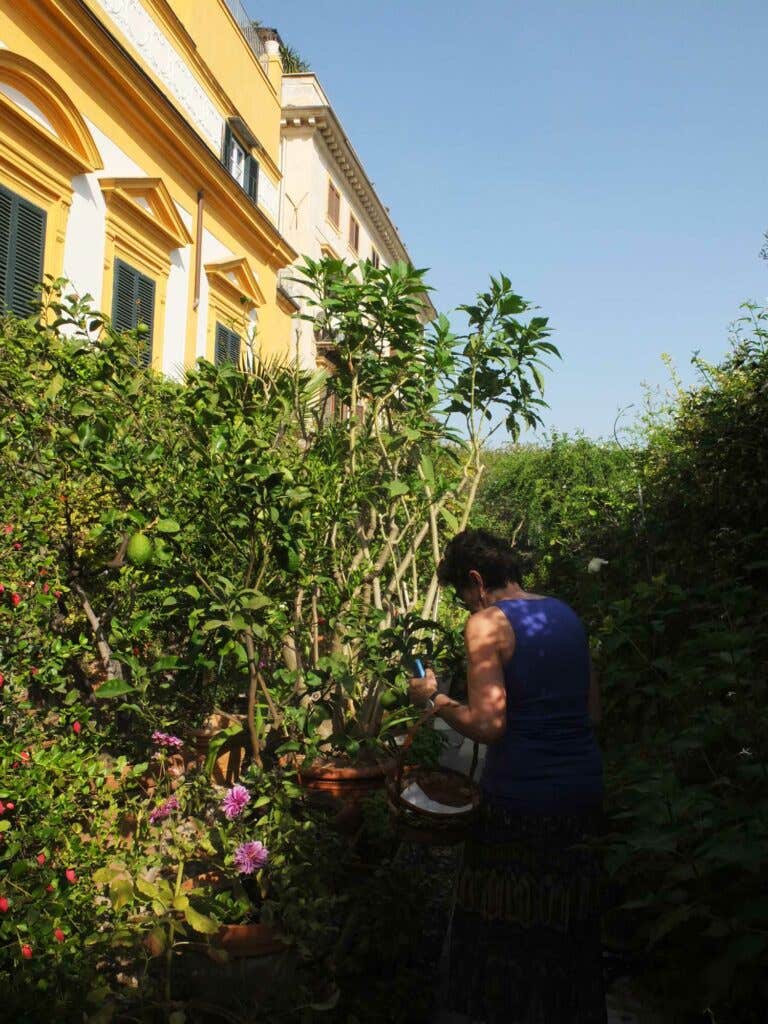
“It’s not just about cooking, otherwise you would go to a chef, why would you want to come to me? It’s also a way of maintaining the life—the legacy—of Tomasi di Lampedusa. It’s what is behind the food; the history of it,” explains Nicoletta in her kitchen, framed by garlands of garlic, copper pots and tomato sauce bottled the week before.
We might be in a 18th Century palazzo, but to school us on Lampedusa’s beloved Sicily, Nicoletta bypasses the aristocratic French cuisine once celebrated within these walls, instead using the language of the island’s cucina povera. It’s this so-called ‘peasant food’ that has sustained Sicilians through tough times—depressions, disasters and conflict—making use of what was on hand; what the harvest brought in; what was foraged, stretching and embellishing to create hearty staples.
Cucina povera is the root of countless regional classics: think of Tuscany’s bread-salad panzanella that breathes new life into old crusts; or the Roman pasta e ceci soup with chickpeas and rosemary that leadens the stomach. But what makes Sicily’s cucina povera so beguiling is the rich blend of flavorings so unlike anywhere else in Italy—citrus, chocolate, cinnamon, raisins, pine nuts—that each tell stories of the island’s past conquerors and rulers, among them the Phoenicians, Greeks, Arabs, Normans and Spanish. It is thrifty but never austere, these days feted by restaurants all over the world. For Nicoletta, and the palazzo she is working to maintain, the cuisine is a lifeline.
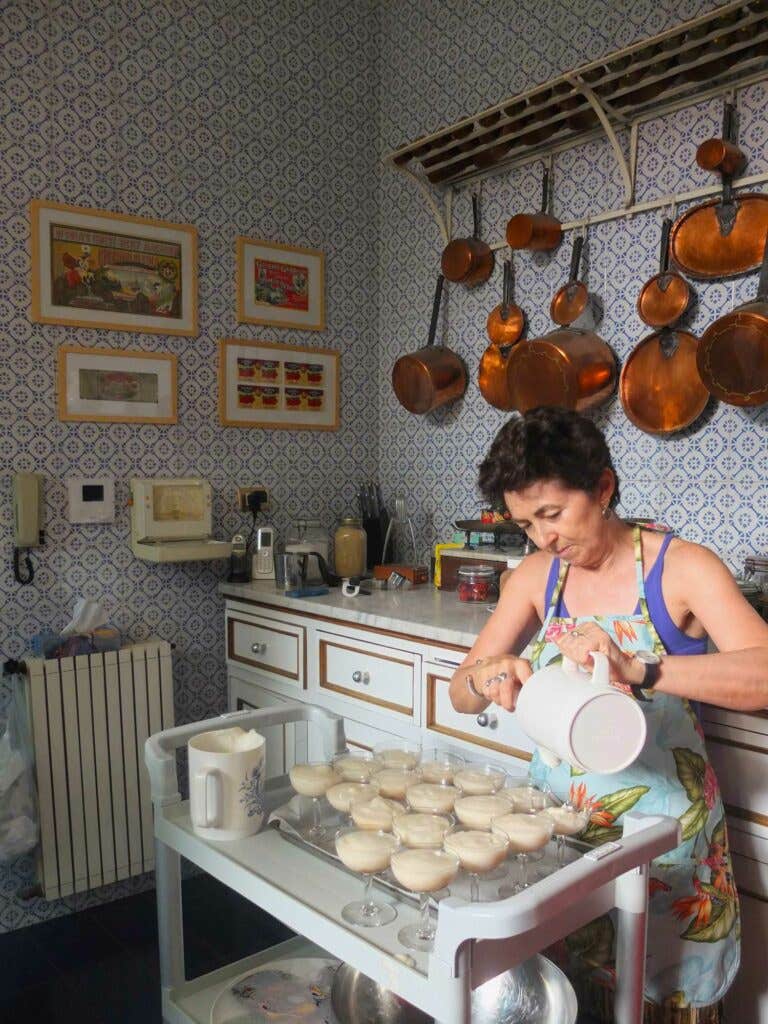
Hailing from Australia, England, Brazil, Germany and the Philippines, we, Nicoletta’s students, have journeyed to the palazzo’s tiled kitchen as lovers of food and history. We cook each dish communally, elbows brushing as we gather around the kitchen table. It’s not difficult food to prepare—we see how the pesto from the westward town of Trapani comes together with a quick blitzing of San Marzanos, basil, almonds, and olive oil—but it requires patience and concentration.
A proper matriarch, Nicoletta delegates: some of us chop herbs for the chickpea fritters panelle, a snack usually gorged roadside by vats of bubbling oil, while others pit olives for the salad using an ancient press that none of us have ever seen before. Like any home cook, the Duchess has her own set of moves, but my favorite is a borrowing from her Venetian mother: while sauteeing onions, she pours in enough water to cover them, so that they can be left alone to soften, but never burn.
“This is true Sicilian cooking,” explains Nicoletta, during one of our final acts in the kitchen. She instructs us how to daintily roll up the butterflied sardines from the Capo market, now filled with bread crumbs, currants, pine nuts, lemon, and fresh herbs from her abundant terrace garden. “Things like the sarde beccafico—every peasant, every fisherman’s wife would have cooked this. Maybe not as beautiful as ours, but still.” Following tradition, the tail of the sardine is left on to flit upwards, so that when laid side by side, the humble fish resembles the trussed up birds for which the speciality is named.
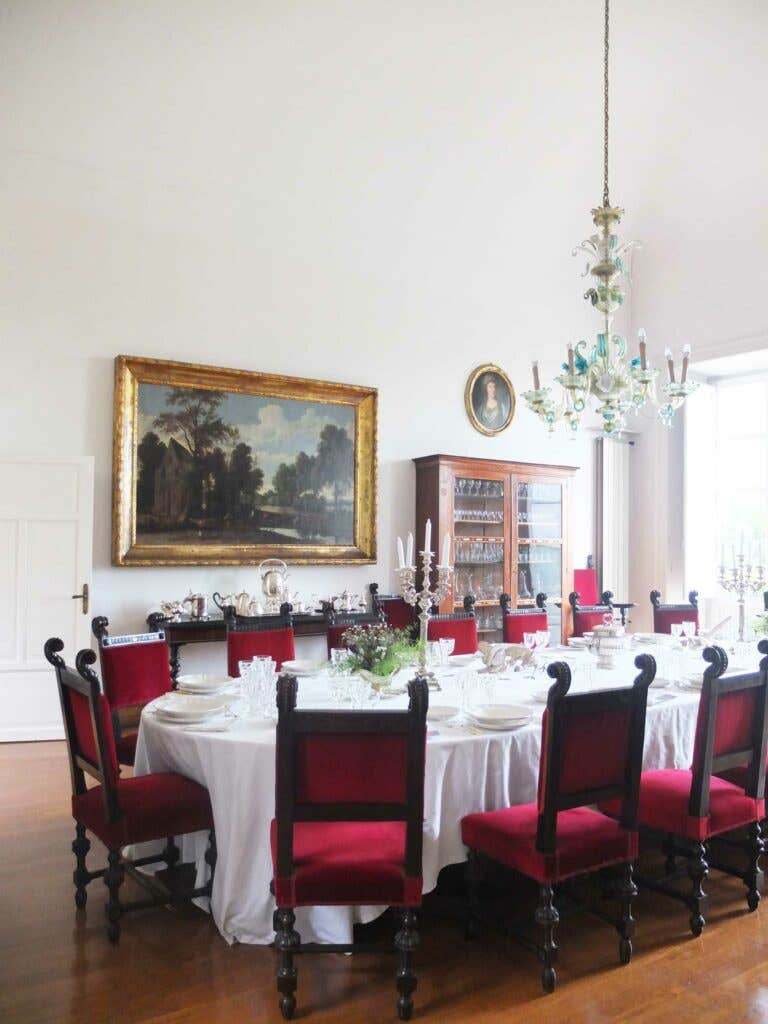
After our lesson, we take our places in the grand dining room, looking onto the Tyrrhenian Sea like Lampedusa himself must have done. Nicoletta is on one end of the table, her husband Gioacchino at the other, orchestrating tales of Sicilian mother-in-laws, squandered family fortunes and the witch (complete with toads) who once occupied the underbelly of the palazzo.
In Lampedusa's The Leopard, which chronicles the decline of the old Sicilian aristocracy, the feasts are revealing: they begin hallowed cutting of the extravagant Sicilian pasta pie, the 'timballo di maccheroni,' in the ancestral family home; and end with a foreign French banquet of veal chaud-froid and foie gras. In 2017, we have circled back to the beginning, Sicilian identity intact. First come the panelle fritters, Ruvidelli pasta coated in the unctuous Trapanese pesto, and the elegant sardines accompanied by an agrodolce salad of sweetly roasted bell peppers and tart capers. Dessert is an almond milk custard strewn with jasmine flowers and candied pumpkin.
These Sicilian classics are a pastiche of historic influences; much like Palermo, itself a layer cake of civilizations, and rather like this historic home that the Lanza Tomasis continue to reconstruct as Lampedusa's legacy. It’s certainly slow work, but with each guest that leaves the table, the story—and the gospel of cucina povera—is spreading.
Further details about ‘A Day Cooking with the Duchess’ can be found here. The full day course is priced at 150 euro (~177 USD) per person. The cost includes transport to, and a tour of, Capo market from the palazzo, ingredients, cooking instruction, refreshments, a five-course lunch in the dining hall, and private tour of the historic apartments at Palazzo Lanza Tomasi.
Keep Reading
Continue to Next Story










